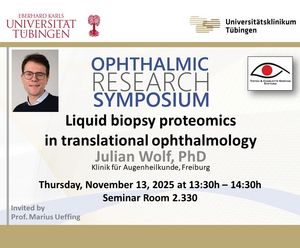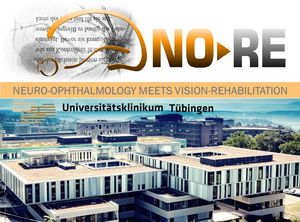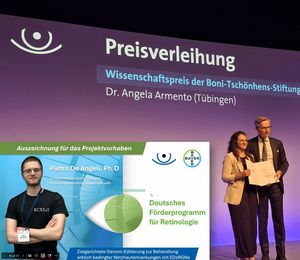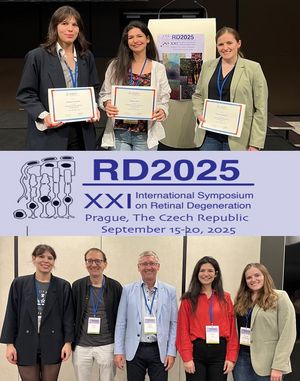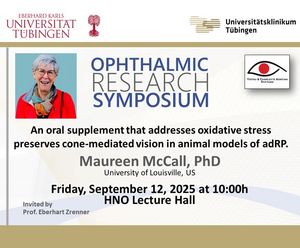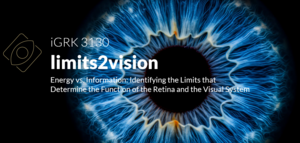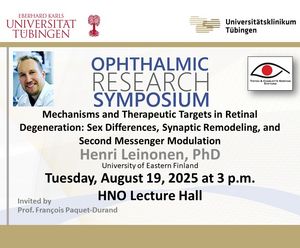The News Section
Institute for Ophthalmic Research Congratulates Furtwangen University on 175 Years – Spotlight on Collaborative Vision Research
Read moreA pioneering HFU–IOR Tübingen collaboration is developing biomimetic lenses that could restore the eye’s natural focus—offering new hope for millions…
Liquid biopsy proteomics in translational ophthalmology
| Ophthalmic Research SymposiumRead moreJulian Wolf’s research integrates multi-omics technologies and computational modeling to unravel the molecular complexity of the human eye and advance…
International Symposium: “Neuro-Ophthalmology Meets Vision Rehabilitation”
Read moreInternational Interdisciplinary Symposium - 8.-9. May, 2026 in Tübingen, Germany
Two IOR young Researchers Honored with Prestigious DOG Awards
Read moreCongratulations to Angela Armento and Pietro De Angeli, who have each received prestigious prizes from the Deutsche Ophthalmologische Gesellschaft…
RD2025 Early-Stage Investigator Travel Awards
Read moreThree young scientists from the Institute for Ophthalmic Research Tübingen earned prestigious RD2025 Travel Awards to present their cutting-edge…
Prof. Simon J. Clark wins the 2025 Svar Complement Excellence Award at ICW Brisbane
Read moreThis award highlights Simon’s outstanding contributions to complement research
An oral supplement that addresses oxidative stress preserve cone mediated vision in animals models of adRP
| Ophthalmic Research SymposiumRead moreSeptember 12, 2025 | 10 a.m. | HNO-Lecturehall
Maureen McCall our guest from University of Louisville, US, will have a presentation on
“An oral…The 'Limits2Vision' International Research Training Group is offering up to 20 PhD positions.
Read moreWe are excited to announce that up to 20 PhD student positions (funded for up to 3.5 years) will be available in Tübingen and Paris, starting on…
Mechanisms and Therapeutic Targets in Retinal Degeneration: Sex Differences, Synaptic Remodeling, and Second Messenger Modulation
| Ophthalmic Research SymposiumRead moreAugust 19, 2025 | 3 p.m. | HNO-Lecturehall
Henri Leinonen our guest from University of Eastern Finland , will have a presentation on
“Mechanisms and…





